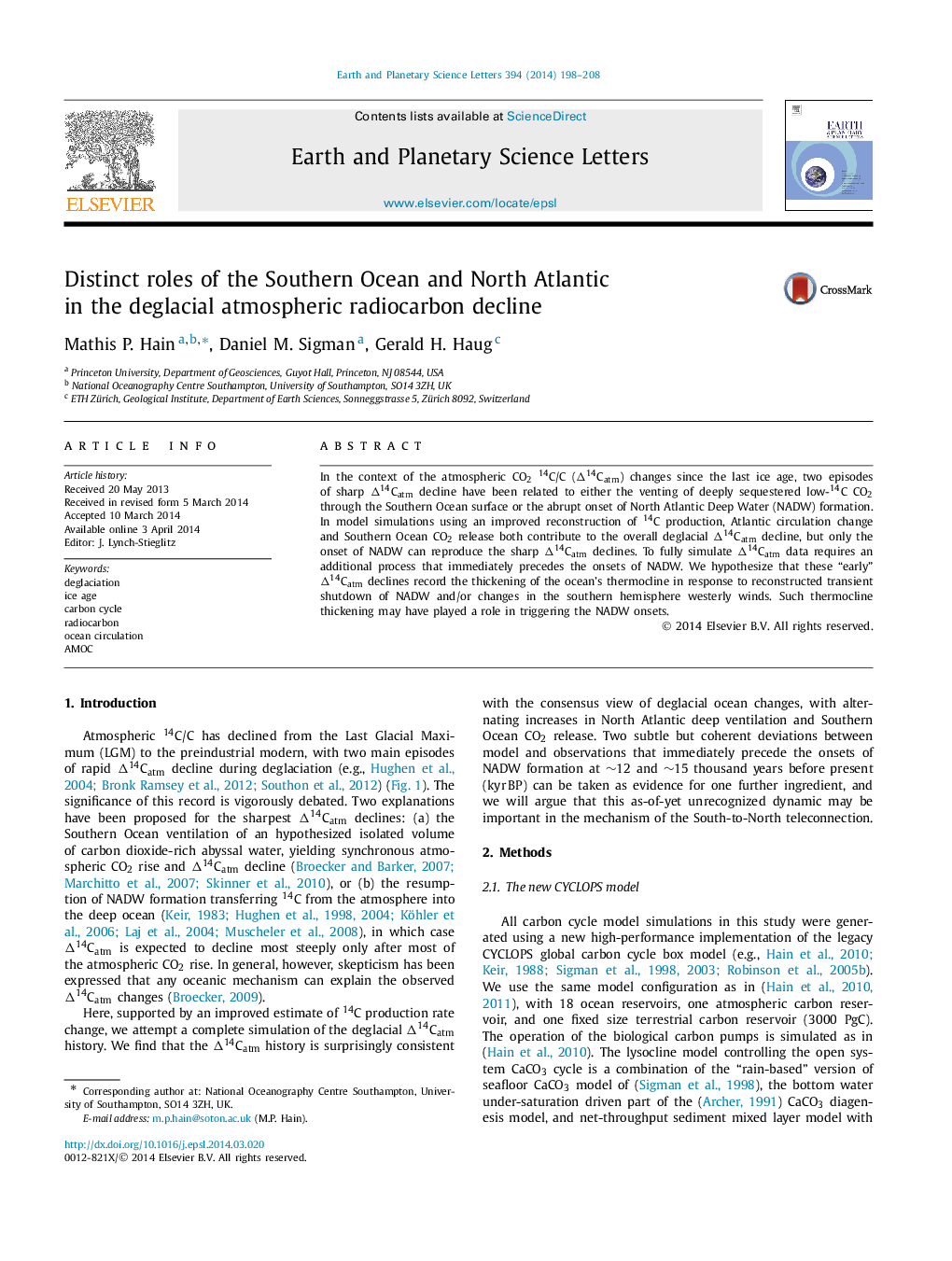| Article ID | Journal | Published Year | Pages | File Type |
|---|---|---|---|---|
| 6429411 | Earth and Planetary Science Letters | 2014 | 11 Pages |
â¢Complete simulation of deglacial atmospheric ÎC14 decline.â¢New estimate of 14C production history consistent with preindustrial 14C activity.â¢North Atlantic circulation changes and Southern Ocean CO2 release both required.â¢NADW onsets account for rapid ÎCatm14 declines during late HS1 and YD.⢓Early” ÎCatm14 declines implicate westerly winds as drivers of NADW onset.
In the context of the atmospheric CO214C/C (ÎCatm14) changes since the last ice age, two episodes of sharp ÎCatm14 decline have been related to either the venting of deeply sequestered low-14C CO2 through the Southern Ocean surface or the abrupt onset of North Atlantic Deep Water (NADW) formation. In model simulations using an improved reconstruction of 14C production, Atlantic circulation change and Southern Ocean CO2 release both contribute to the overall deglacial ÎCatm14 decline, but only the onset of NADW can reproduce the sharp ÎCatm14 declines. To fully simulate ÎCatm14 data requires an additional process that immediately precedes the onsets of NADW. We hypothesize that these “early” ÎCatm14 declines record the thickening of the ocean's thermocline in response to reconstructed transient shutdown of NADW and/or changes in the southern hemisphere westerly winds. Such thermocline thickening may have played a role in triggering the NADW onsets.
Graphical abstractDownload high-res image (143KB)Download full-size image
